-
 play_arrow
play_arrow
Clubalicious Clubalicious Radio
-
 play_arrow
play_arrow
London Calling Podcast Yana Bolder

Las Vegas, NY (August 1, 2024)—Since opening last fall, Sphere in Las Vegas has become one of the most famous buildings in the world—a giant, orb-shaped venue able to astound more than 17,000 people at a time, thanks in large part to the 160,000-square-foot LED screen that towers above its stage. That giant video wall isn’t just a technical gamechanger, however; its sheer magnitude quietly dictates what acts can play there, because Sphere isn’t just meant for performers who can fill an arena; no, it’s meant for artists whose visual legacies are as rich as their musical ones. In other words, it’s tailor-made for Dead & Company.
The supergroup—Grateful Dead mainstays Bob Weir and Mickey Hart, singer/guitarist John Mayer, bassist Oteil Burbridge, keyboardist Jeff Chimenti and drummer Jay Lane—has been playing there since May and will wrap up its 30-date Dead Forever—Live at Sphere residency this month. Along the way, each show has sent audiences careening through time and space to experience touchstones from the Grateful Dead’s colorful history—1960s San Francisco, a 1978 concert at the Great Pyramids in Egypt, the legendary Wall of Sound P.A. system, and more. The result is nothing less than a multimedia epic that plays out over the course of two sets and three hours each night, all soundtracked live by the band in fine form.
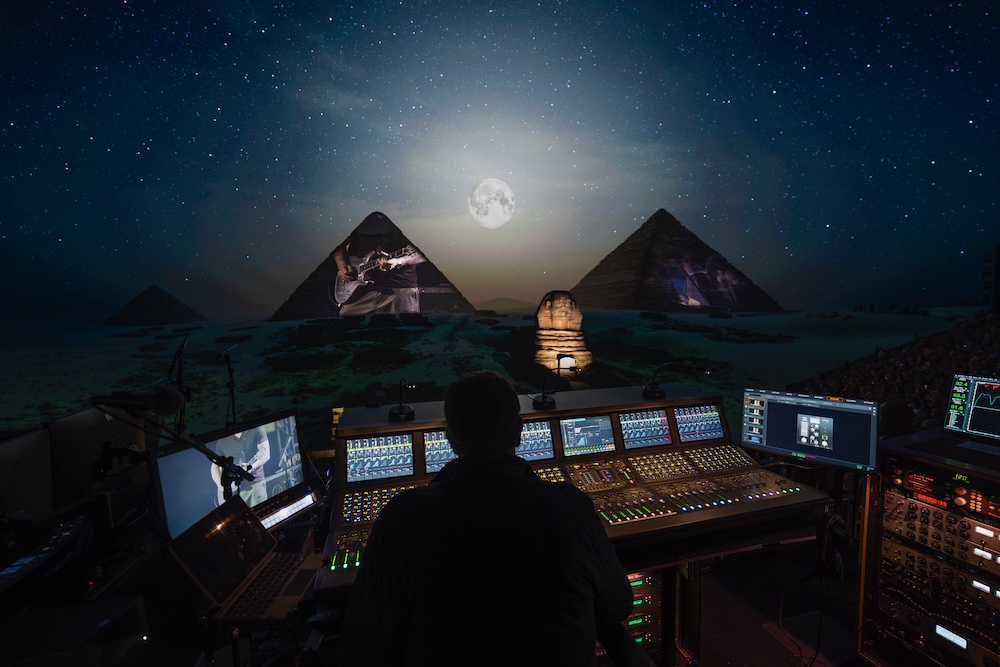
BACK FROM THE DEAD
It’s a far cry from last summer when Dead & Company played its final tour, making the rounds one last time with live sound provider UltraSound (Petaluma, Calif.), which has worked with the Grateful Dead and its spinoffs since 1978. Sphere opened soon after the tour’s final show, however, and it wasn’t long before the opportunity to play a residency came along. The decision to play there was easy to make, but everything after that was a bit more complicated.
Shepherding the residency’s development, Mayer took on the role of creative director, while the band’s longtime tour director and front-of-house engineer, UltraSound CEO Derek Featherstone, became the show producer, and Sam Pattinson, managing director of creative agency Treatment Studios, led the project’s content creation.
Given that the show’s music and visuals are so tightly intertwined, getting content creation underway early was the top priority. Featherstone recalls, “It came down to, not really a pitch, but getting Bobby and Mickey together with John and myself, and presenting John’s vision and theme for the show—essentially reviewing his storyboards and talking about content concepts. Everybody in the band was in agreement and thought Mayer’s concept was a cool direction to go in. We started to plug away at it in November, and Sam created a team of animators and artists who were working endlessly up until we started in May. Meanwhile, I’ve been working on producing and also the administrative side, keeping the timeline and budgets in order—or out of order, depending on how you look at them.”
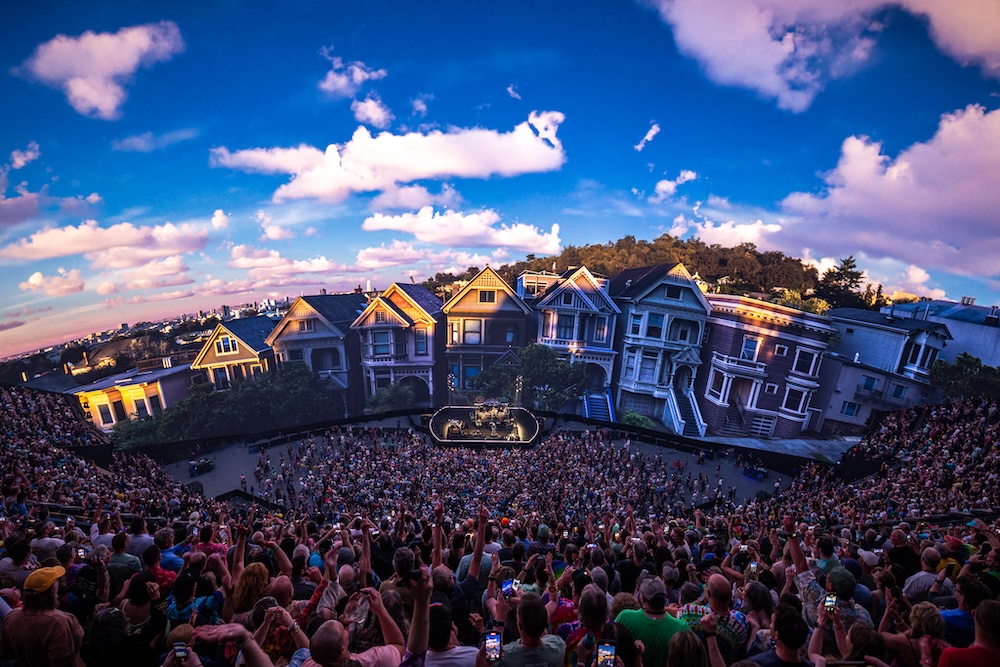
Creating visuals for the massive media plane (the official term for the LED screen) was particularly challenging because the content had to work with an improvisational band that never plays a song the same way—or length—twice. Throw in perpetually changing set lists and a repertoire filled with hundreds of songs, and things only get more complicated. “The show needs to stay as fluid as a Dead & Company show typically would be,” says Featherstone, “because the one thing we were conscious of was to not build a show where the band was worried the whole time about timecode or video sync.”
Ultimately, Treatment Studios developed more than seven hours of visual content, roughly five hours of which get used across the three shows the band plays in a given residency weekend. Content isn’t tied to specific songs, however, because every show’s running order is different. To help create each night’s set list, Dave Matthews Band FOH engineer and longtime UltraSound employee Tom Lyon coded a database of every Dead & Company song ever played, based on information from SetlistFM. Analytics from Nugs.com were added, calculating the 10-year cumulative average length of each song in the band’s repertoire, followed by AI data determining the most popular songs, and streaming counts that indicated which tunes have been listened to the most.
“We’re looking at each song and saying, ‘this piece of content would fit here’ or sometimes we’ll lay the content out and say, ‘this song would fit here,’ so it’s a pretty creative way of building a set list, and a true collaboration between Weir, Mayer, a database, and myself,” says Featherstone. “One piece of content might be eight minutes long, so you say, ‘that wouldn’t work with this acoustic song, but it might fit this one.’ Having the average timing for every song played over the last 10 years became crucial in lining these shows up. We’ve already passed playing 100 different songs so far.”
WALL OF SOUND
Every performance is heard through a house audio system comprised of more than 1,600 speakers around the venue, centered around a proscenium array of 464 Holoplot X1 speaker modules located behind the LED panels so as not to block the screen. The result of all those speakers is spatial audio that is used not so much to send sounds whipping around the room—although it can do that—but rather to ensure everyone hears the same level of audio quality. The unique nature of the P.A., however, requires rethinking how a mix is approached.
“We’re sending about 38 to 44 channels of audio out—and there’s no left or right; you’re mixing in blocks,” says Featherstone. “Behind the stage above the band are five primary clusters you’re working with; the ones in the middle are the most in-time, because they’re in the dead center of the room. If you put stuff too far off to the sides of the room, it creates a lot of slapback or giant comb filters. Say you put a snare in the furthest wide speaker clusters: you’ll hear several snare drums and that’s not what you want to be doing—but if you put a Hammond organ or something that’s less staccato over there, it sounds great. You’re building the whole mix up differently—a real change in workflow after so many years of mixing a certain way.”
Learning that new approach in the months leading up to the residency required building a miniature version of the venue’s P.A. at UltraSound headquarters, much as Phish did at Rock Lititz and U2 did in Europe to prepare for their Sphere runs. Both those acts have long worked with audio provider Clair Global, and Featherstone readily says, “Clair Global had a big role here building out this demo system.”
Inside the Audio Sphere
Recreating the P.A. required placing speakers on trusses to represent all the zones in Sphere, and then using the venue’s in-house DSP processing for practicing and checking the results. “They have some calculations where you can press a button in the Meyer Sound D-Mitri system and change the virtual location you’re sitting in,” says Featherstone. “You’re mixing as if you’re in the mix position, and then you press a button and you’re sitting in Section 201; you readjust all the delay times on the speakers, and then you can understand how bad it sounds if you put the wrong things in the wrong places. That’s a crucial tool for getting in Sphere.”
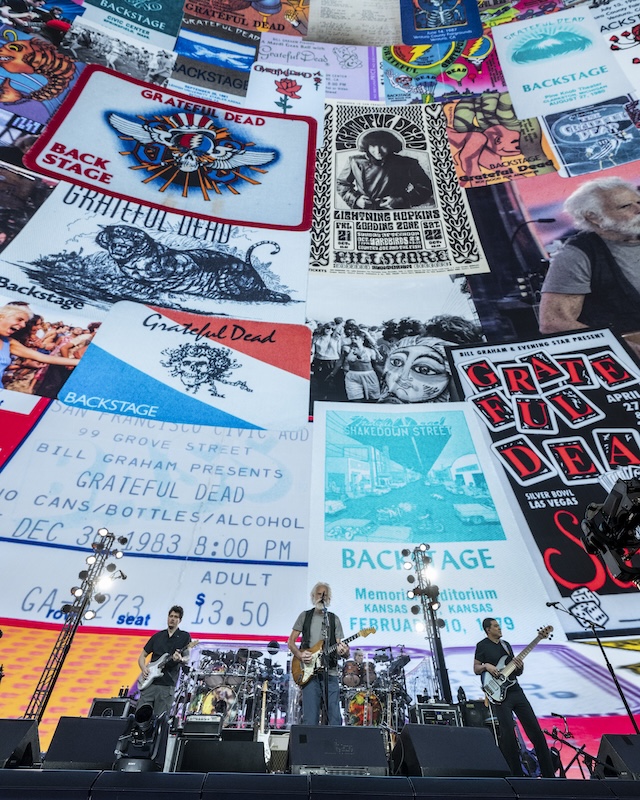
It was a necessary one, too. Since Sphere doubles as a Vegas attraction, playing a 50-minute film multiple times a day, Dead & Company could only get two days of rehearsal in situ. “Coming into the Sphere, the key thing was getting everybody on in-ear monitors and used to playing with no amplified sound on stage,” says Featherstone. “In-ears are tricky to dive into when you have to versus when you want to, but you need them here. If you’re playing in the Sphere without in-ears, the latency can be up to 200 milliseconds by the time you hear the P.A. behind you; it’ll really set your timing off. During prior rehearsals in Southern California, we also put the monitor guys where the band couldn’t see them and set up on-stage camera systems so that the band could communicate with them. We went through all that in advance so that when they showed up at the Sphere, they were used to the technology. Once we got in the building, we did a seven-hour rehearsal one day and another four-hour one—and then we just went for it.”
Hidden behind the LED wall, monitor engineer Ian Dubois mixes for Hart and Lane, while Lonnie Quinn mixes Weir and Chimenti, and Chris Bloch looks after Mayer and Burbridge, all three pros working on Avid S6L consoles. Up at the front-of-house position, Featherstone, along with longtime system engineer Michal Kacunel, is on a 48-fader Avid surface, with a pair of effects racks tied in over MADI streams, allowing him to use some favorite outboard gear: “I have a bunch of Summit tube compressors, old dbx 160s and some UREI LA-3As and LA-4As to keep the tonality the same and retain that analog feel of the band.”
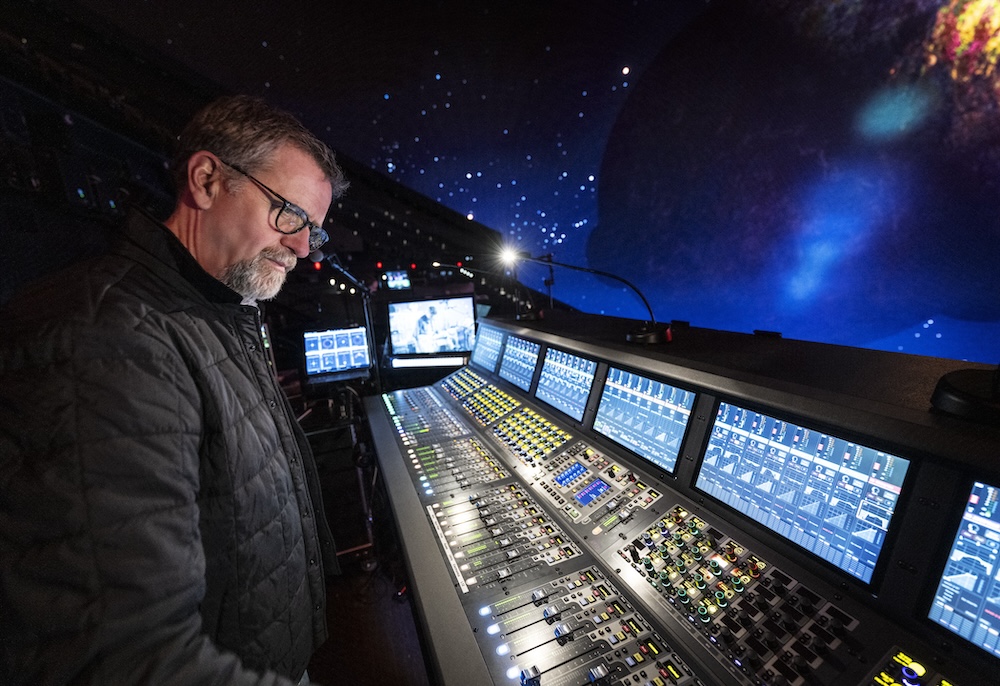
Meyer Sound Spacemap Go, a spatial sound design plug-in and mixing tool, is used for the surround mixing. “We built Spacemap programs into the Avid, so that we’re feeding about 24 effect zones through our console, not the house D-Mitri system,” says Featherstone. “That way, at any given moment, I can pull up the plug-in and, say, take a vocal delay and make it run in a circle around the room, speed it up or slow it down, make something come from front to back or side to side. It’s freeform, which is how this band has to be approached, because everything’s always never the same.”
With that need for flexibility, the Avid desk’s snapshot feature is never used, keeping Featherstone actively mixing throughout each marathon gig. The biggest mix challenge inside Sphere, it turns out, is getting the vocals loud enough to be heard. “You have the sound system behind the vocal mics—like the Wall of Sound days—so you’re really working on keeping the P.A. out of the vocal mics,” says Featherstone. “We’ve always used gated foot pads where the musicians stand on it and it turns the vocal mic on. In the past, that let us use really nice condenser mics on vocals, but in this particular case, you really have to minimize the bleed even when they’re on the pad.” The band’s vocals are now captured with a mix of Sennheiser e945s and Shure SM58s.
With the residency now nearly over, all the months of preparation have paid off; fans have come out in droves to enjoy the spectacle of Dead Forever, making it another landmark in the history of a band that’s had plenty of highpoints already. “We’re six months into building this thing and it’s great to see it come alive, for sure,” says Featherstone. “Being in the middle of it, sometimes I don’t necessarily realize that, and then one night, I’ll be mixing and watching it and say, ‘Wow…this is a pretty cool show!’”
Written by: Admin
Similar posts
Recent Posts
- 🎶 New Music: JID, OneRepublic, Morgan Wallen, Post Malone, MarkCutz, Kidd Spin + More!
- Classic Tracks: The Fireballs’ “Sugar Shack”
- Classic Tracks: Arlo Guthrie’s “City of New Orleans”
- Classic Track: k.d. lang’s “Constant Craving”
- Classic Tracks: Waylon Jennings’ “Are You Sure Hank Done It This Way”
Recent Comments
No comments to show.Featured post

Latest posts

🎶 New Music: JID, OneRepublic, Morgan Wallen, Post Malone, MarkCutz, Kidd Spin + More!

Classic Tracks: The Fireballs’ “Sugar Shack”

Classic Tracks: Arlo Guthrie’s “City of New Orleans”

Classic Track: k.d. lang’s “Constant Craving”

Classic Tracks: Waylon Jennings’ “Are You Sure Hank Done It This Way”
Current show

Love To Be
The Global Connection
2 hours of the finest House music from the award-winning event Love to Be... which has been hosting epic parties for over 25 years. Presented by some of the worlds most prominent artists every week, delivering exclusive music and the best classic tracks, label showcases, interviews and new talent. Curabitur id lacus felis. Sed justo mauris, auctor eget tellus nec, pellentesque varius mauris. Sed eu congue nulla, et tincidunt justo. Aliquam semper faucibus odio id varius. Suspendisse varius laoreet sodales.
closeUpcoming shows

Fresh Is Fresh
This Weeks Hottest Releases
11:00 - 15:00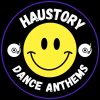
House Story
Dance Anthems
15:00 - 17:00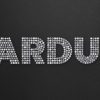
STARDUST
Presented by Bergwall
17:00 - 19:00
Femme House
Lp giobbi
19:00 - 20:00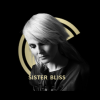
In Session
Sister Bliss
20:00 - 21:00Chart
Powered by Dee jay promotions visit us







 Invalid license, for more info click here
Invalid license, for more info click here